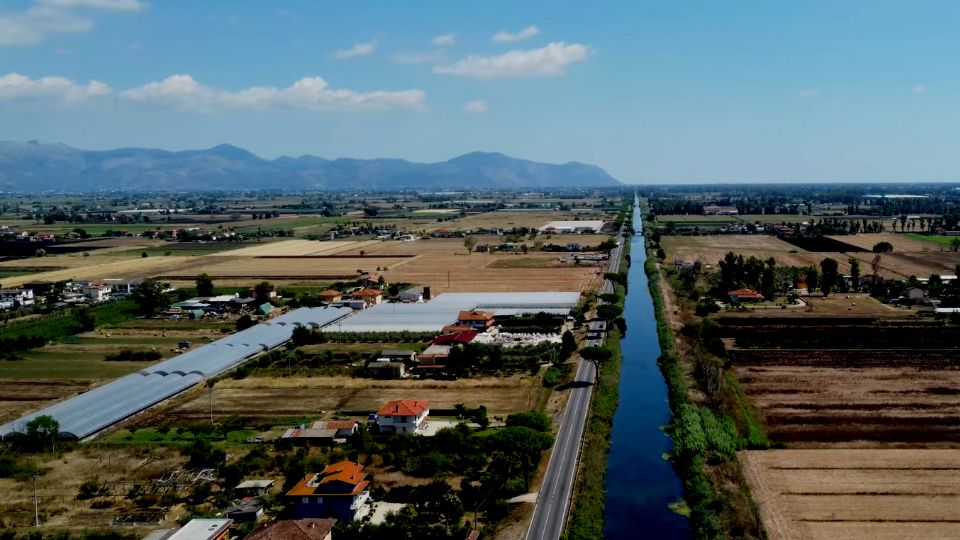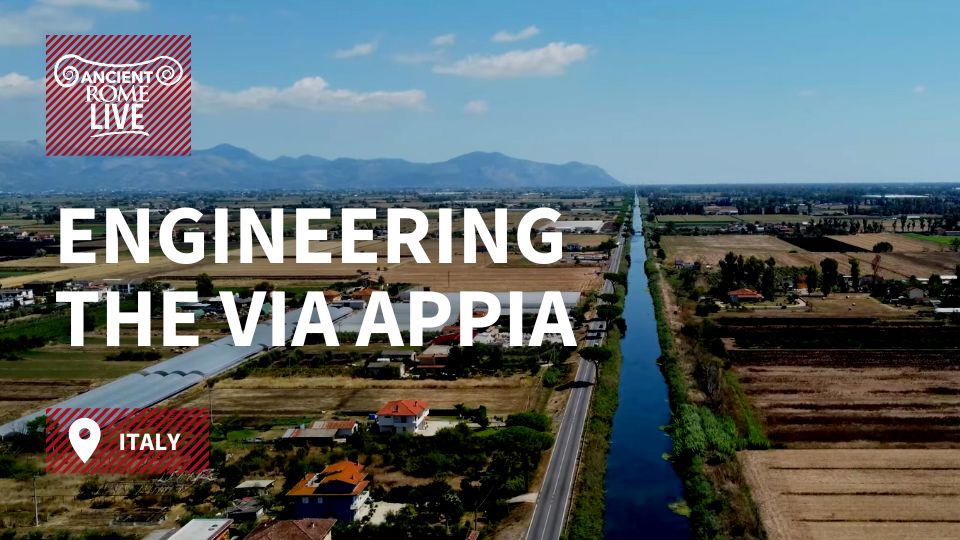Start with our video overview:
The first six miles of Via Appia began close to the Circus Maximus in the direction of Ciampino, from where the road continues for more than 300 miles to Brindisi. The road began from the Porta Capena, the historic gate at the intersection of the Caelian, Palatine and Aventine hills. From this point, the road followed a trajectory out of the city which was later lined by the Baths of Caracalla and flanked by the Porta Appia of the Aurelian walls dating to the 3rd century CE. The Almone river flows along this early stretch of road, noted by Ovid as the location where the cult statue of Magner Mater was taken from its temple on the Palatine to be washed every year.
In the archaeological park of Via Appia on the outskirts of Rome, there are monuments in various states of disrepair. Some predate the construction of the road, while others were built around it. For example, the church and catacombs of Saint Sebastian were built between the second and third milestones. Interestingly, the word ‘catacomb’ is derived from the Latin catacumbas meaning “next to the hollow, or quarry,” and Via Appia was paved with volcanic stones extracted from nearby quarries.
In addition to late antique Christian catacombs, other funerary monuments mark this section of Via Appia. Owing to the Roman taboo of adult burials within the pomerium (the sacred boundary line of Rome), most tombs were built along the many roads leaving the city, including the Via Appia. The 25 meter-high mausoleum of Caecilia Metella is the best preserved example of a monumental tomb along the road. The tomb is evidence of funerary customs, building materials, and architectural techniques in Late Antiquity, as well as the medieval practice of recycling ancient structures when it was incorporated into a castle in the 14th century and battlements were added atop the structure.
The ancient landscape along the road was a mosaic of tombs and villas; among them, the villas of Maxentius and the Quintilii remain visible at the third and fifth miles of the road respectively. The so-called mausoleum of the Horatii and Curiatii is located at the fifth mile, linked by myth to the war with Alba Longa during the reign of Tullus Hostilius, the legendary third king of Rome. At the sixth mile, the largest tomb to be constructed on the Via Appia survives in part: now named Casal Rotondo (as the tomb is circular), during the medieval period, a farmhouse was constructed above it. Casal Rotondo is one of many Roman structures that were reused as building foundations in later centuries, which both partly destroyed, and partly preserved their structures.
References
- Chilton, “The Epitaph of Himerus from the Jewish Catacomb of the via Appia”, (Pennsylvania 1989).
- Claridge, “Rome: An Oxford Archaeological Guide”, (Oxford 2010).
- Kerr, “A Topography of Death: the buildings of the emperor Maxentius on the via Appia, Rome”, (Oxford 2002).
- Marconi, “The Oxford Handbook of Greek and Roman Art and Architecture”, (Oxford 2018).
- Porfyriou and B. Yu, “China and Italy: Routes of Culture, Valorisation and Management”, (Rome 2018).
- M. Steinberg, “Counting Christianity for Political Gain? Religious Politics and the Villa of Maxentius on Via Appia”, (Michigan 2004).
This content is brought to you by The American Institute for Roman Culture, a 501(C)3 US Non-Profit Organization.
Please support our mission to aid learning and understanding of ancient Rome through free-to-access content by donating today.
Cite This Page
Cite this page as: Darius Arya, The American Institute for Roman Culture, “Via Appia: Episode II, Engineering the Via Appia” Ancient Rome Live. Last modified 12/01/2022. https://ancientromelive.org/via-appia-episode-ii-engineering-the-via-appia/
License
Created by The American Institute of Roman Culture, published on 12/01/2022 under the following license: Creative Commons: Attribution-NonCommercial-ShareAlike. This license lets others remix, tweak, and build upon this content non-commercially, as long as they credit the author and license their new creations under the identical terms. Please note that content linked from this page may have different licensing terms.



